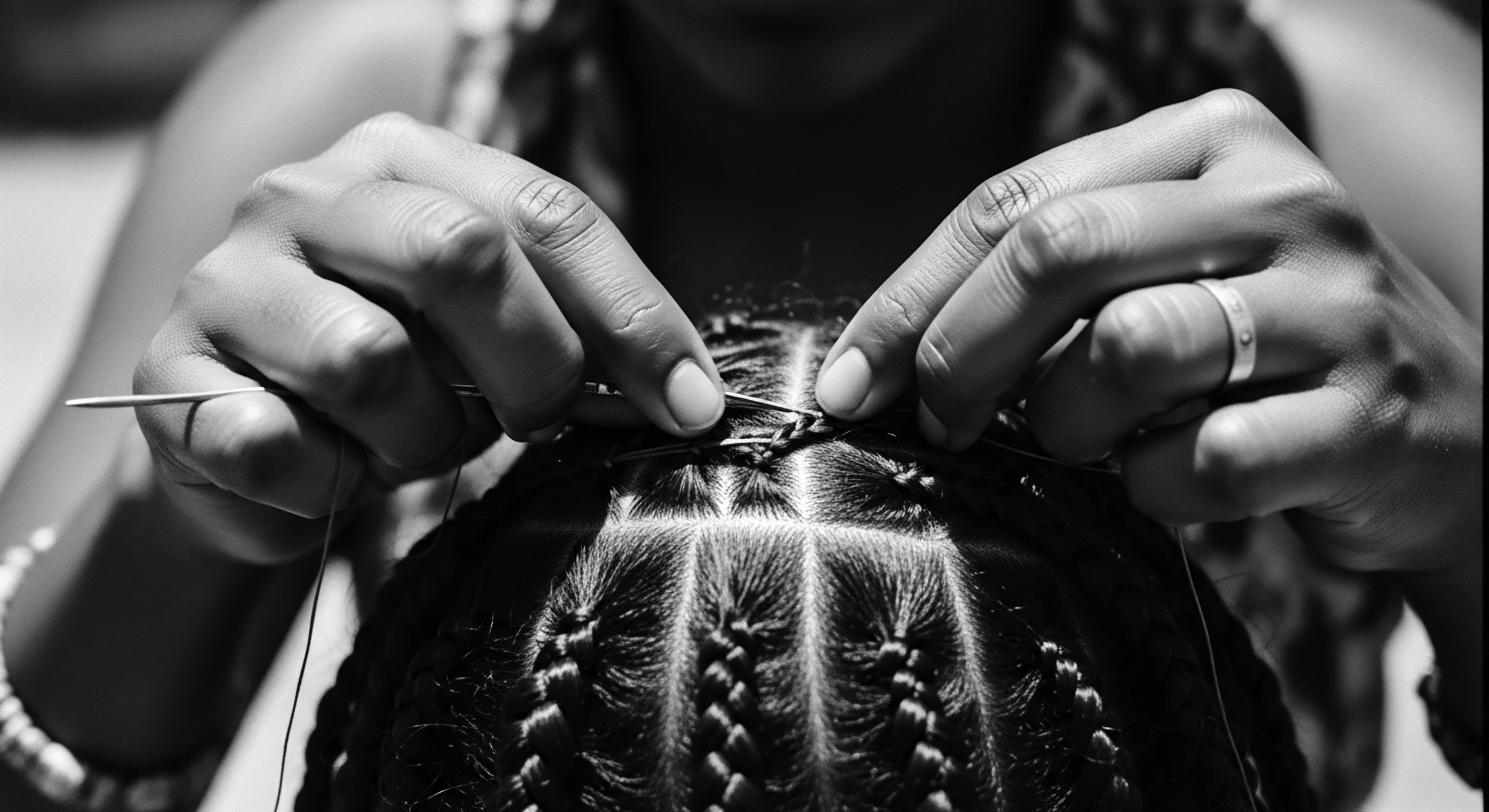
Fundamentals
Within Roothea’s living library, the Self-Perception Hair stands as a foundational concept, an intricate thread woven into the very fabric of identity, particularly for those whose lineage is graced by textured hair. This is not merely about the physical attributes of one’s tresses; rather, it is a profound exploration of how the unique characteristics of hair, its coils, kinks, waves, and patterns, are understood, felt, and internalized by an individual. It speaks to the deeply personal lens through which one views their own crown, a lens often shaped by ancestral memory, communal understanding, and the societal currents that have long sought to define, and sometimes diminish, the grandeur of textured strands.
The initial understanding of Self-Perception Hair begins with its simplest explanation ❉ it is the subjective experience of one’s own hair. This includes its appearance, its tactile sensation, its manageability, and the emotions it evokes. For generations, particularly within Black and mixed-race communities, hair has served as far more than a biological outgrowth; it has functioned as a silent communicator, a canvas for artistry, and a symbol of resilience. The perception of one’s hair is thus intrinsically linked to broader societal narratives and historical contexts, shaping how individuals navigate their world and present themselves.
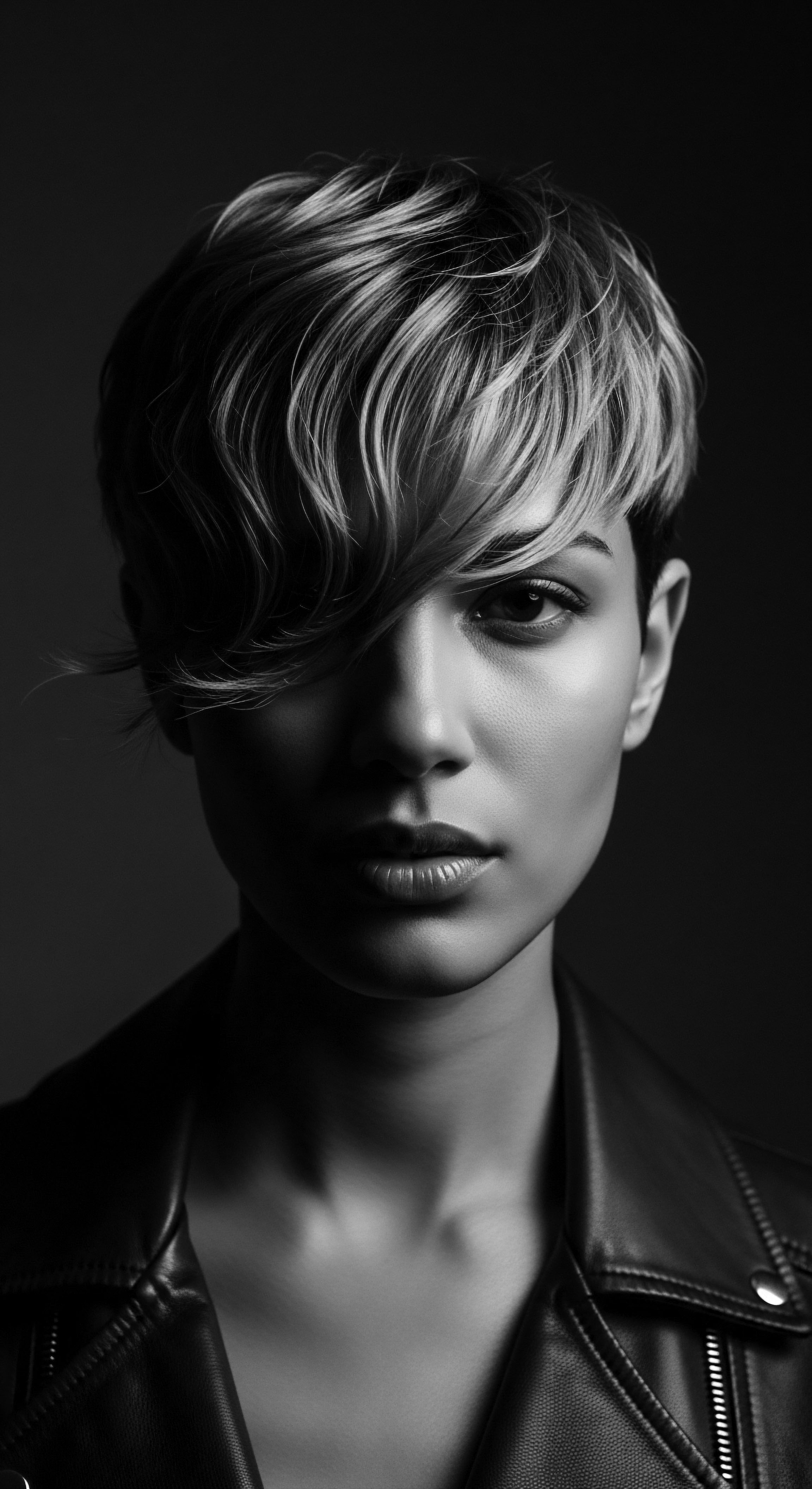
Early Stirrings ❉ Hair as a Mirror of Self
From the earliest communal gatherings, the way hair was groomed, adorned, and presented held significant communal and personal weight. The very act of touching one’s hair, of feeling its texture, or observing its response to care, initiates a quiet dialogue between the individual and their heritage. This foundational dialogue shapes the nascent understanding of Self-Perception Hair. It is the initial recognition of hair as a part of oneself, a living extension of identity.
Self-Perception Hair is the deeply personal and often culturally influenced understanding an individual holds about their own hair, extending beyond its physical characteristics to encompass its emotional and symbolic significance.
Children, from tender ages, begin to form these perceptions, often mirroring the attitudes and practices of their caregivers and community. If hair is treated with reverence, as a delicate treasure requiring specific, knowledgeable attention, this reverence becomes part of the child’s self-perception. Conversely, if hair is viewed as a burden, a challenge, or something to be ‘tamed,’ these sentiments can sadly seep into the developing self-image, influencing their Self-Perception Hair from an early age.
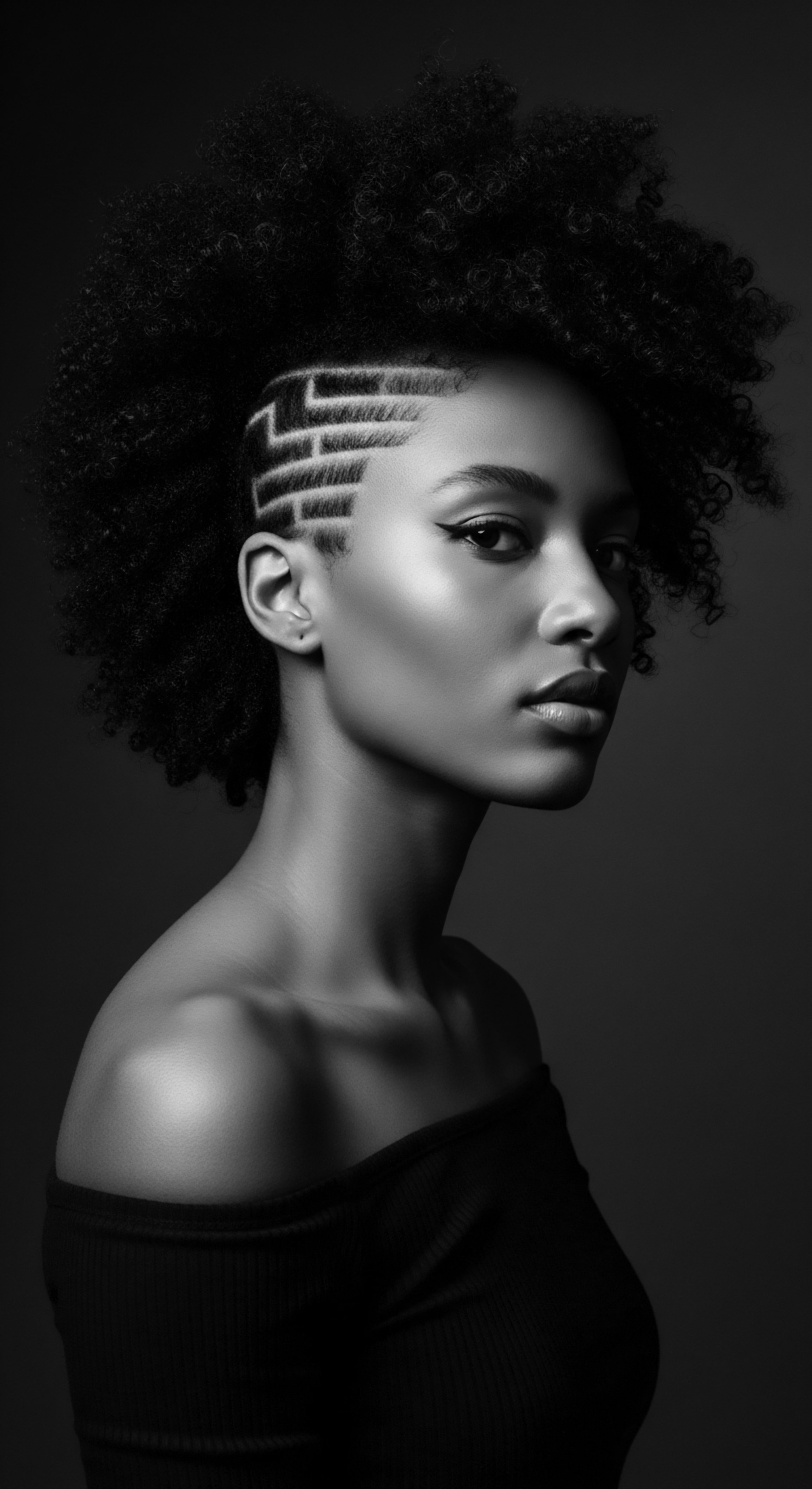
Ancestral Echoes in Daily Rituals
Ancestral practices, passed down through oral tradition and lived experience, are the earliest teachers of Self-Perception Hair. These rituals were not merely about cleanliness or appearance; they were acts of connection, community, and cultural affirmation. The application of natural oils, the meticulous braiding, or the shaping of coiffures were all imbued with purpose, each stroke reinforcing a sense of belonging and worth.
- Communal Grooming ❉ Shared moments of hair care, often among women, served as a powerful means of transmitting knowledge and reinforcing positive self-perceptions around textured hair.
- Symbolic Adornment ❉ The incorporation of beads, cowrie shells, or specific wraps communicated status, tribal affiliation, or marital standing, directly influencing how one’s hair was perceived by self and others.
- Natural Ingredients ❉ The reliance on plant-based remedies and oils, often sourced from the immediate environment, fostered a deep appreciation for the hair’s natural state and its connection to the earth.
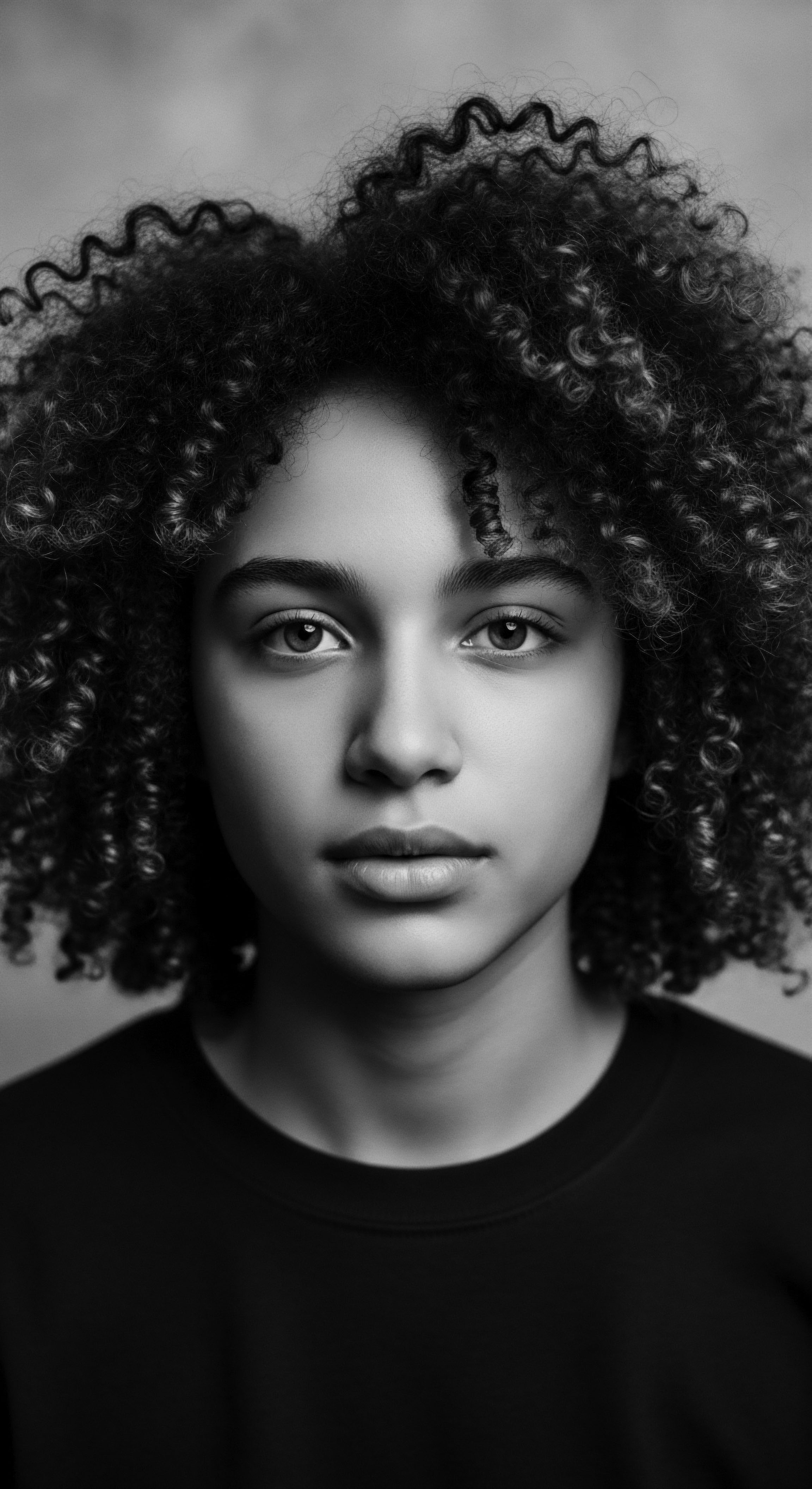
Intermediate
Moving beyond the foundational understanding, the intermediate exploration of Self-Perception Hair delves into the layered meanings and influences that shape this deeply personal experience, particularly within the rich context of textured hair heritage. Here, the explanation of Self-Perception Hair expands to encompass the dynamic interplay between individual psychology, cultural norms, and historical legacies. It is an acknowledgment that one’s hair is not a static entity but a living expression, constantly negotiating the echoes of the past with the realities of the present.
The meaning of Self-Perception Hair, at this level, becomes a complex interplay of internal and external forces. Internally, it involves the individual’s emotional connection to their hair, their confidence in its natural state, and their agency in styling choices. Externally, it encompasses the societal standards of beauty, the pervasive influence of media representations, and the often unspoken, yet deeply felt, pressures to conform or resist. For individuals with textured hair, this external pressure has historically been a significant factor, shaping generations of self-perception.
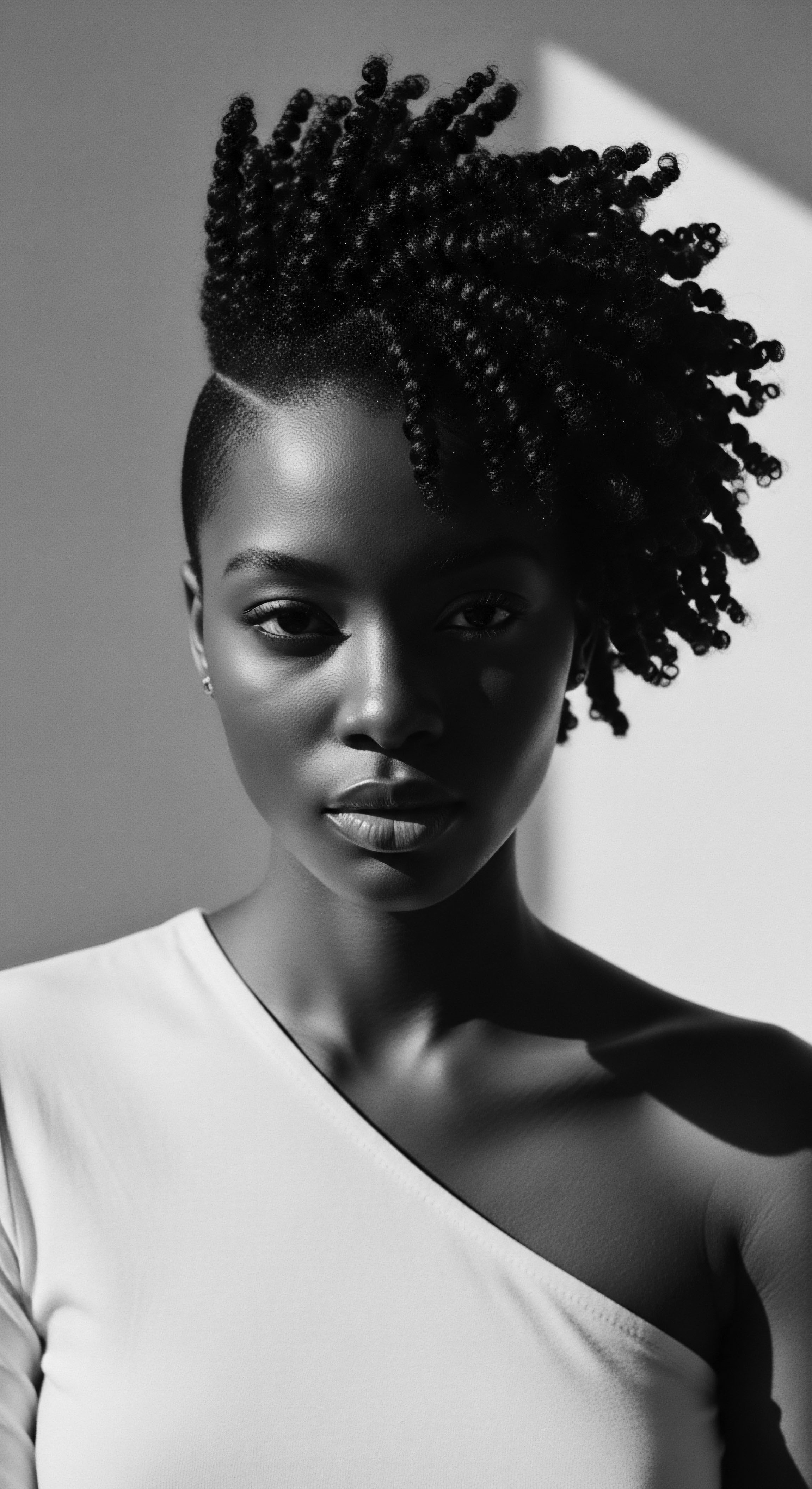
The Weight of History ❉ Hair as a Cultural Barometer
The historical trajectory of textured hair, particularly within the Black diaspora, provides an essential framework for comprehending Self-Perception Hair. During periods of enslavement and subsequent systemic oppression, the deliberate denigration of Black hair served as a tool of dehumanization, stripping individuals of their cultural markers and forcing conformity to Eurocentric beauty ideals. This historical context profoundly impacts the collective and individual Self-Perception Hair, manifesting as internalized biases or, conversely, as powerful acts of defiance and reclamation.
The intermediate understanding of Self-Perception Hair recognizes it as a dynamic interplay of personal psychology, cultural influences, and the enduring historical legacies that shape one’s relationship with their textured tresses.
Consider the insidious nature of ‘good hair’ versus ‘bad hair’ rhetoric, a damaging construct that permeated communities for decades. This binary classification, often linked to proximity to whiteness, directly attacked the Self-Perception Hair of countless individuals, leading to practices aimed at altering natural texture through chemical relaxers or excessive heat. The long-term psychological impact of such narratives is immense, influencing not only individual styling choices but also self-esteem and cultural connection.
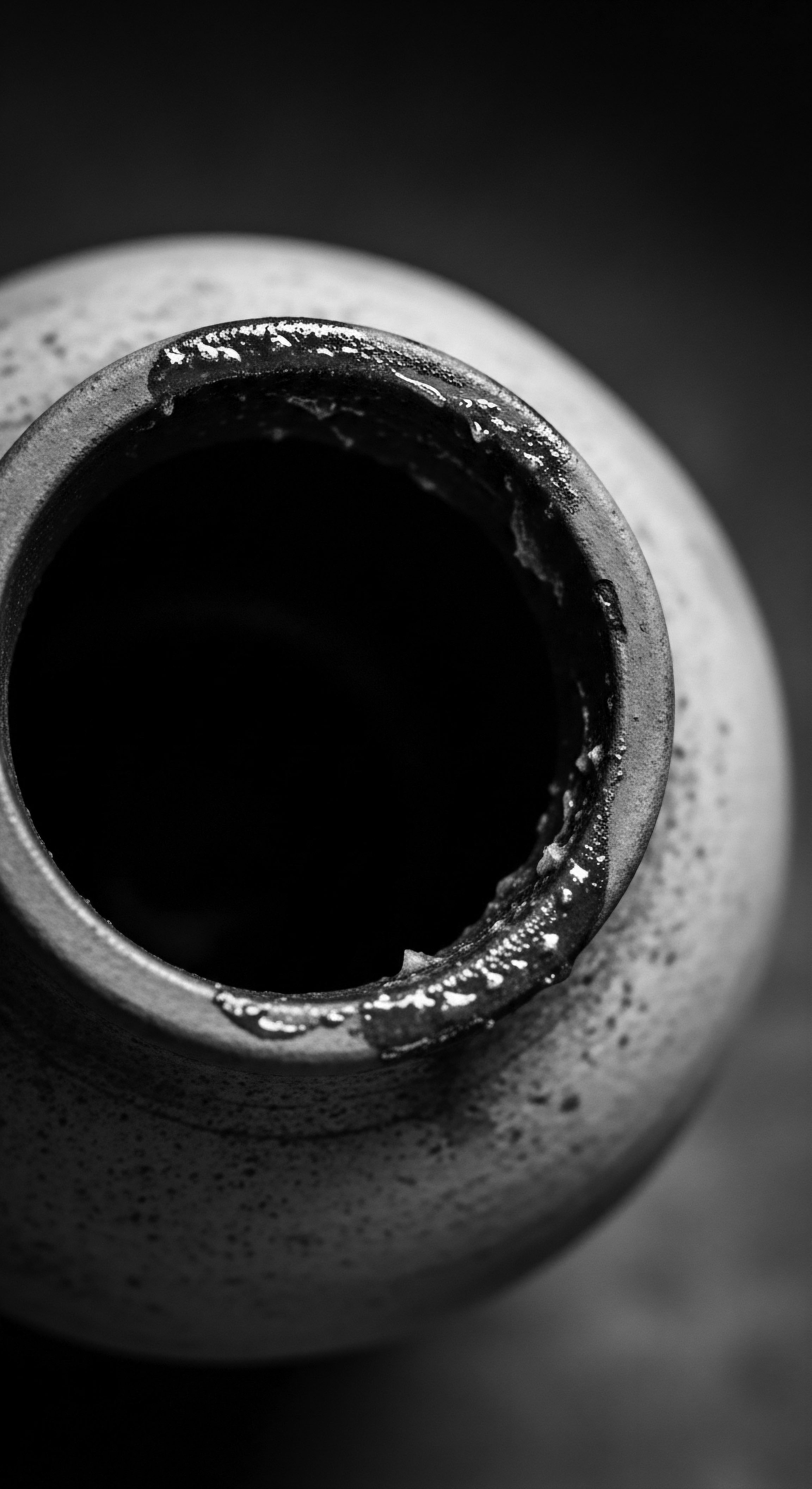
Ancestral Practices ❉ Reclaiming the Crown
Amidst these historical challenges, ancestral wisdom persisted, often underground, preserving the profound significance of textured hair. The re-emergence of natural hair movements, particularly in the mid-20th century and again in the early 21st century, can be understood as a collective re-calibration of Self-Perception Hair. These movements represent a conscious decision to divest from oppressive beauty standards and to reconnect with the inherent beauty and versatility of one’s natural texture. This period saw a renewed interest in traditional care methods and styling techniques, often passed down through family lines.
The shift towards celebrating natural texture has been a powerful force in redefining Self-Perception Hair for many. It is a declaration of autonomy and a recognition of hair as a conduit to ancestral identity. The meticulous process of learning to care for one’s natural hair, understanding its unique needs, and discovering its boundless possibilities, becomes an act of self-love and cultural affirmation.
| Historical Period Pre-Colonial Africa |
| Dominant Hair Practices Intricate braiding, adornment with natural elements, communal grooming rituals. |
| Impact on Self-Perception Hair Hair as identity ❉ A source of pride, spiritual connection, and social communication, reinforcing a strong, positive Self-Perception Hair. |
| Historical Period Slavery & Post-Emancipation |
| Dominant Hair Practices Forced concealment, chemical straightening, efforts to mimic Eurocentric styles. |
| Impact on Self-Perception Hair Hair as burden/shame ❉ Internalized negative perceptions, leading to a diminished Self-Perception Hair and a disconnect from ancestral forms. |
| Historical Period Civil Rights Era (1960s-70s) |
| Dominant Hair Practices The Afro, natural hair liberation movements, embracing Black aesthetic. |
| Impact on Self-Perception Hair Hair as defiance/pride ❉ A powerful statement of cultural pride and political identity, fostering a renewed, empowered Self-Perception Hair. |
| Historical Period Contemporary (2000s onwards) |
| Dominant Hair Practices Natural hair movement resurgence, diverse styling, focus on health and ancestral ingredients. |
| Impact on Self-Perception Hair Hair as authenticity/wellness ❉ A journey of self-discovery, holistic care, and honoring heritage, leading to a multifaceted and authentic Self-Perception Hair. |
| Historical Period The journey of textured hair care reflects a continuous negotiation of identity, resilience, and the enduring connection to ancestral wisdom, shaping Self-Perception Hair across generations. |
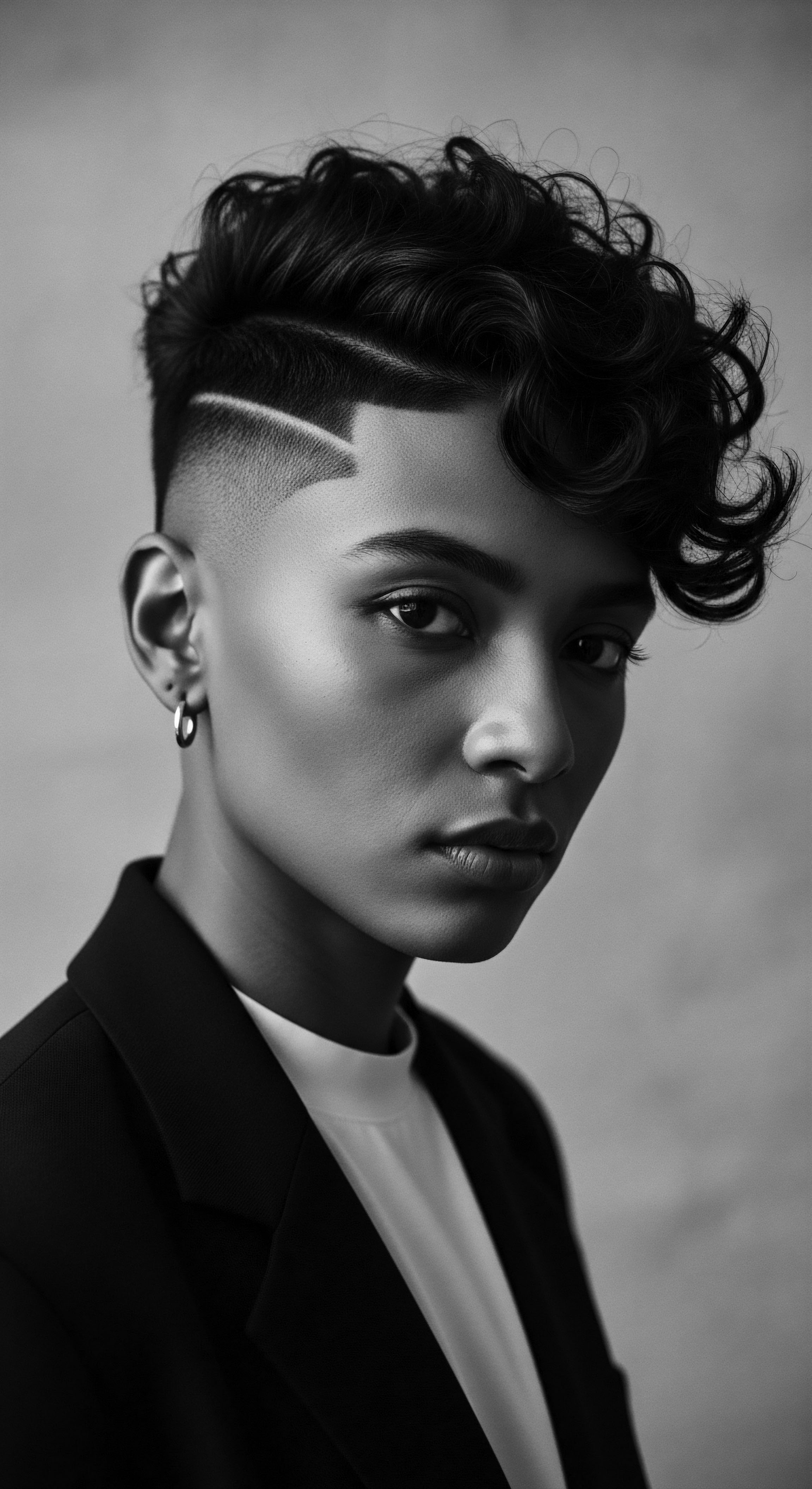
Academic
At the academic stratum, the Self-Perception Hair transcends simple observation, presenting itself as a complex biopsychosocial construct, a nuanced delineation of how individuals cognitively appraise, emotionally respond to, and behaviorally interact with their hair, especially within the context of inherited textured patterns. This interpretation moves beyond surface-level aesthetics to explore the profound psychological underpinnings, the sociological pressures, and the deep cultural significations that coalesce to form this unique aspect of self-concept. It is a testament to the intricate relationship between the tangible biology of a strand and the intangible realms of identity, belonging, and ancestral memory.
The meaning of Self-Perception Hair, viewed through an academic lens, encompasses its function as a psychological anchor, a visible marker of social identity, and a repository of cultural capital. It is the intricate process by which one’s hair, in its myriad forms—from the tightest coils to the loosest waves—becomes an active participant in the construction of self-esteem, body image, and even mental well-being. This rigorous examination necessitates an interdisciplinary approach, drawing from psychology, sociology, anthropology, and critical race studies to fully grasp its profound implications, particularly for those navigating the complexities of Black and mixed-race hair experiences.
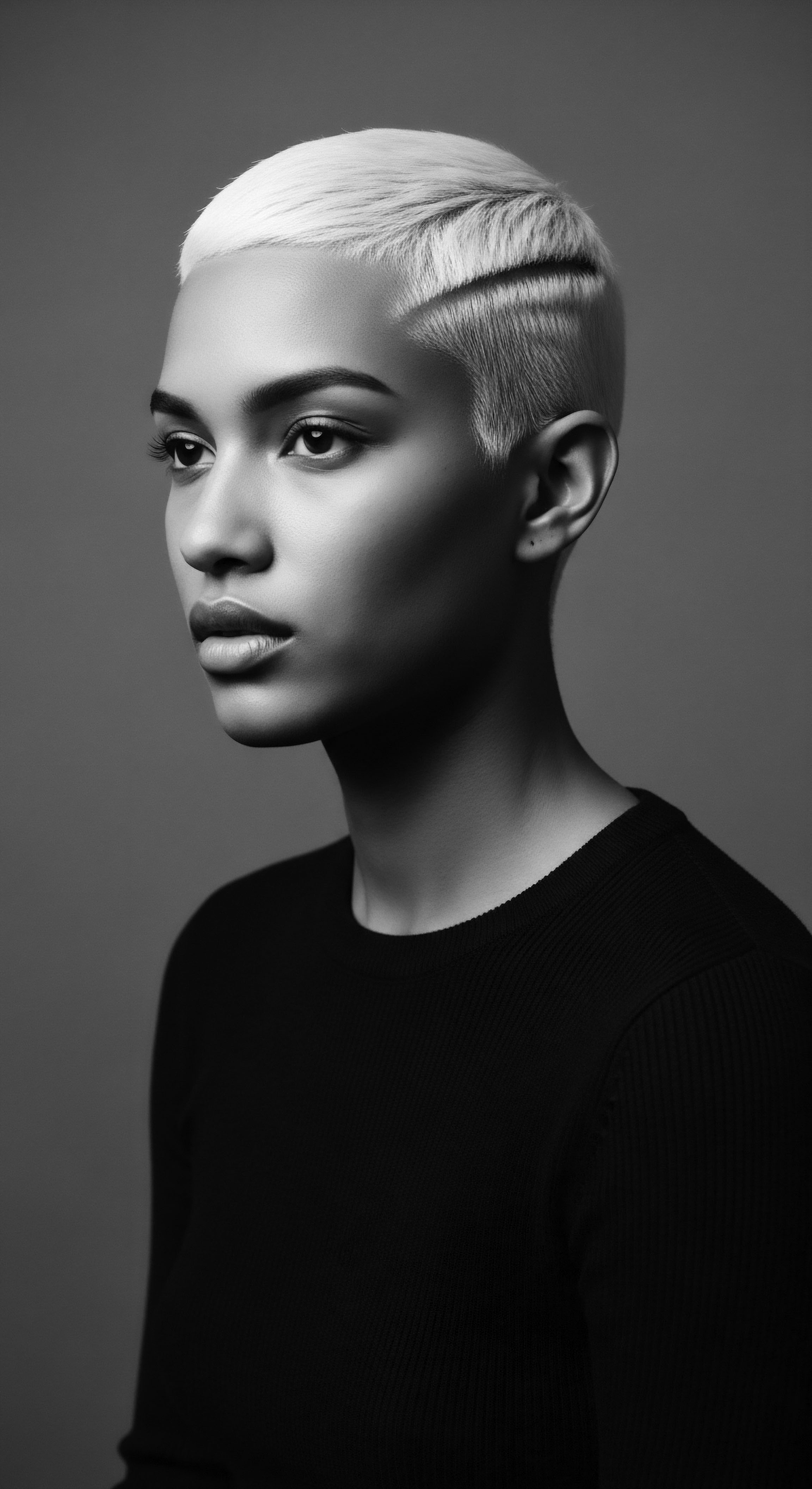
Echoes from the Source ❉ Biology and Ancient Wisdom
The foundational biological attributes of textured hair—its elliptical follicle shape, uneven keratin distribution, and propensity for coiling—contribute to its unique physical properties, including its dryness and susceptibility to breakage if not properly cared for. Yet, ancient African civilizations possessed a profound understanding of these inherent characteristics, developing sophisticated hair care practices that were both preventative and restorative. These practices, passed down through generations, were not merely cosmetic; they were deeply rooted in a holistic philosophy of well-being, where hair health was intrinsically linked to spiritual and communal vitality. The ancestral wisdom, therefore, offers a historical counterpoint to contemporary scientific findings, often validating traditional approaches.
For instance, the widespread use of natural oils like shea butter, palm oil, and various herbal infusions in traditional African societies was not accidental. These substances, rich in emollients and nutrients, provided essential moisture and protection for coiled strands, mitigating the very challenges that modern trichology now scientifically identifies. The communal detangling sessions, the rhythmic braiding, and the deliberate shaping of elaborate coiffures were acts of care that reinforced the hair’s natural integrity, thereby cultivating a positive Self-Perception Hair from childhood. This historical continuity underscores the enduring relevance of ancestral practices in nurturing both hair and self.
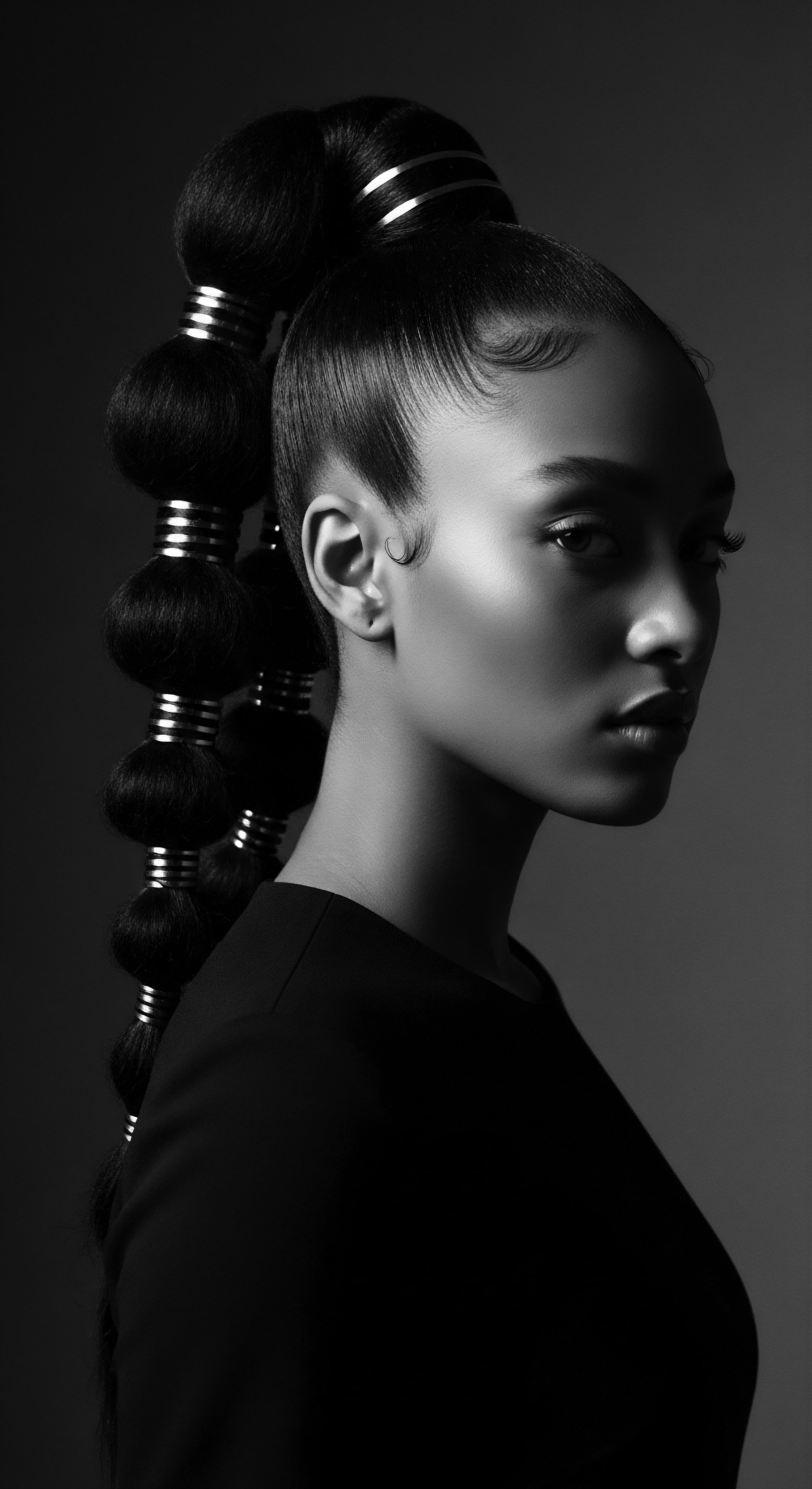
The Tender Thread ❉ Community, Identity, and Resilience
The social construction of Self-Perception Hair is undeniably shaped by the historical forces of colonization and enslavement, which systematically sought to dismantle traditional African beauty standards and impose Eurocentric ideals. This deliberate cultural assault led to a pervasive internalization of negative hair perceptions within many diasporic communities, giving rise to concepts such as ‘hair politics’ and the ‘good hair’ versus ‘bad hair’ dichotomy. This complex social dynamic, as explored by scholars like Tameka Bradley Hobbs (2012) in her examination of hair and identity in the African American experience, reveals how external pressures profoundly influence internal self-perception. Her work details how the perception of hair, particularly its texture, became a critical marker of social acceptance and perceived beauty, often leading to practices of alteration and concealment.
The historical example of discriminatory practices, such as the Louisiana Black Codes post-emancipation, which sometimes regulated the public appearance of Black women’s hair, serves as a stark illustration. These codes, while not universally enforced or codified across all Southern states in the same way, represented a broader societal effort to control Black bodies and identities, including their hair. Such regulations, even if localized or informal, underscored the pervasive idea that certain hair textures were deemed ‘unacceptable’ or ‘unruly’ in public spaces, thereby compelling many to adopt styles that mimicked European textures. This direct historical intervention into personal hair presentation undeniably impacted the Self-Perception Hair of countless individuals, fostering a sense of inadequacy or a drive to conform.
The academic examination of Self-Perception Hair unveils it as a complex biopsychosocial construct, intricately linked to historical oppressions and resilient cultural affirmations, particularly within textured hair communities.
Yet, against this backdrop of historical suppression, communities continuously found ways to resist and redefine beauty on their own terms. The ‘natural hair’ movement, which gained significant traction in the 1960s and again in the early 2000s, represents a powerful act of collective reclamation. This movement is not merely a stylistic preference; it is a profound socio-cultural phenomenon that challenges dominant beauty paradigms and actively cultivates a positive Self-Perception Hair.
Individuals choosing to wear their natural textures openly and proudly contribute to a broader shift in societal norms, thereby creating a more affirming environment for future generations. This choice is an act of self-definition, allowing for a more authentic expression of identity rooted in ancestral pride.

The Unbound Helix ❉ Voicing Identity and Shaping Futures
The Self-Perception Hair, in its most evolved academic interpretation, serves as a dynamic expression of agency and self-authorship. It reflects how individuals, particularly those with textured hair, utilize their hair as a medium for personal storytelling, cultural expression, and even political statement. The choices made regarding hair—whether to wear it in its natural state, to style it in traditional forms like braids or twists, or to experiment with vibrant colors—are not superficial decisions.
Instead, they are deeply meaningful acts that communicate aspects of identity, belonging, and individual worldview. This active engagement with one’s hair transforms it into a powerful tool for self-actualization.
The long-term consequences of a positive Self-Perception Hair are far-reaching, extending beyond personal confidence to influence broader societal change. When individuals feel affirmed in their natural hair, they are more likely to challenge discriminatory practices in schools, workplaces, and public spaces. This collective assertion of hair identity contributes to the dismantling of systemic biases and the creation of more inclusive environments. Academic studies in social psychology have begun to quantify the positive correlation between self-acceptance of one’s natural hair and increased psychological well-being among Black women, suggesting that the journey to embrace one’s textured hair is often intertwined with a deeper journey of self-acceptance and liberation.
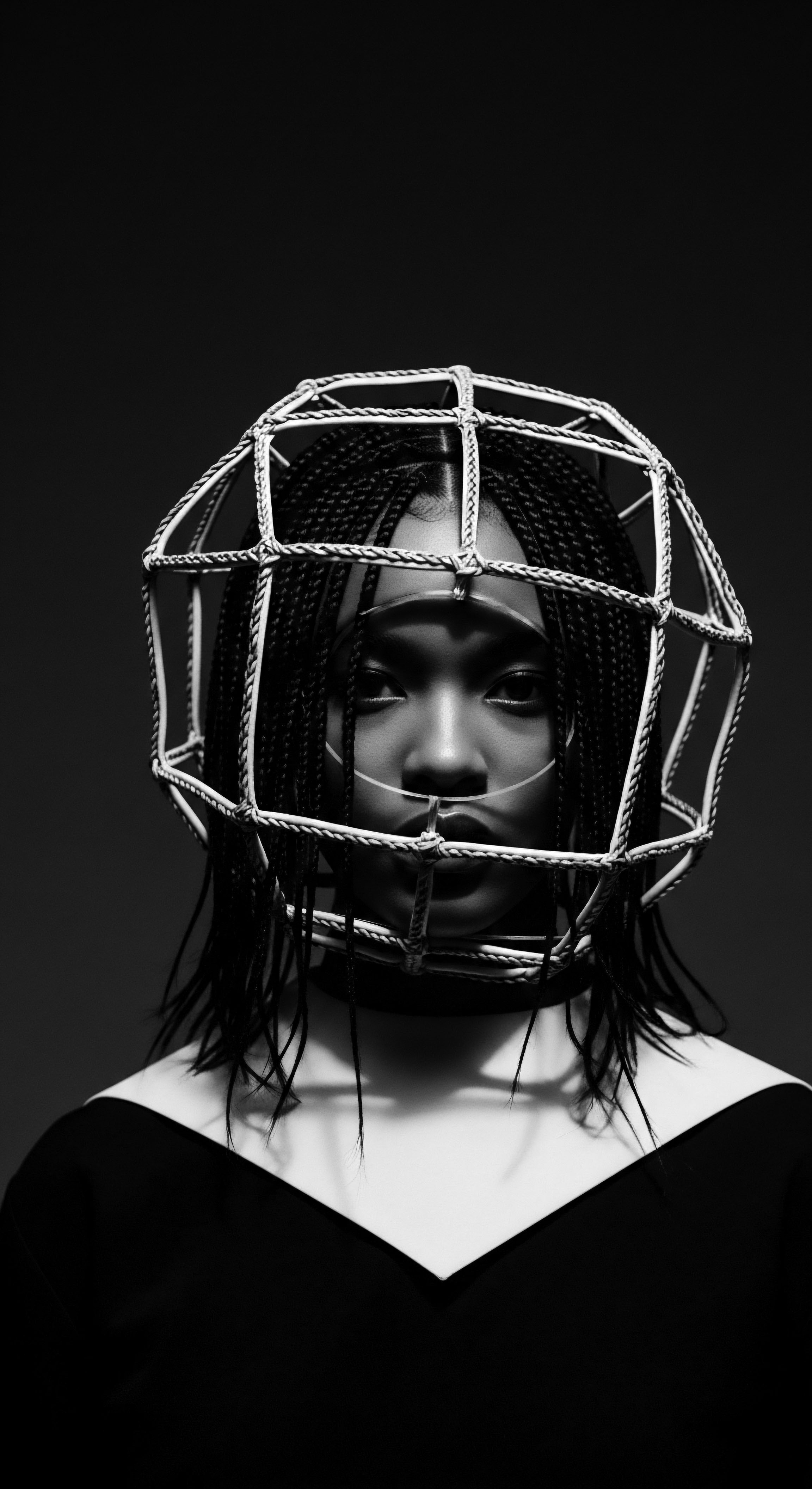
Interconnected Incidences ❉ Hair, Health, and Holistic Wellness
The Self-Perception Hair also possesses an intricate connection to holistic wellness. The mental burden associated with conforming to unattainable beauty standards, or the physical damage inflicted by harsh chemical treatments, can have tangible health consequences. Conversely, the adoption of gentle, heritage-informed hair care practices not only preserves the integrity of the hair but also promotes a sense of peace and connection to ancestral rhythms. This integrated approach to hair care, where physical well-being is inseparable from emotional and spiritual harmony, is a core tenet of Roothea’s philosophy.
Furthermore, the academic lens reveals how the Self-Perception Hair influences consumer behavior and the market for hair care products. The growing demand for products specifically formulated for textured hair, often prioritizing natural ingredients and sustainable practices, reflects a collective shift in self-perception. This market evolution is driven by individuals who are actively seeking products that honor their hair’s unique heritage and support its natural state, moving away from a legacy of products designed to alter or suppress natural texture. This economic shift, in turn, reinforces positive self-perceptions, creating a virtuous cycle of affirmation and empowerment.
- Psychological Resilience ❉ A positive Self-Perception Hair contributes to greater self-esteem and reduced anxiety, fostering a sense of authenticity and belonging.
- Cultural Continuity ❉ Embracing natural textures and traditional styles strengthens ties to ancestral heritage, serving as a powerful conduit for intergenerational knowledge transfer.
- Societal Impact ❉ Collective shifts in Self-Perception Hair challenge discriminatory practices and promote broader acceptance of diverse beauty standards, influencing policy and public discourse.
- Economic Empowerment ❉ Increased demand for heritage-aligned products and services supports Black-owned businesses and fosters economic self-sufficiency within communities.
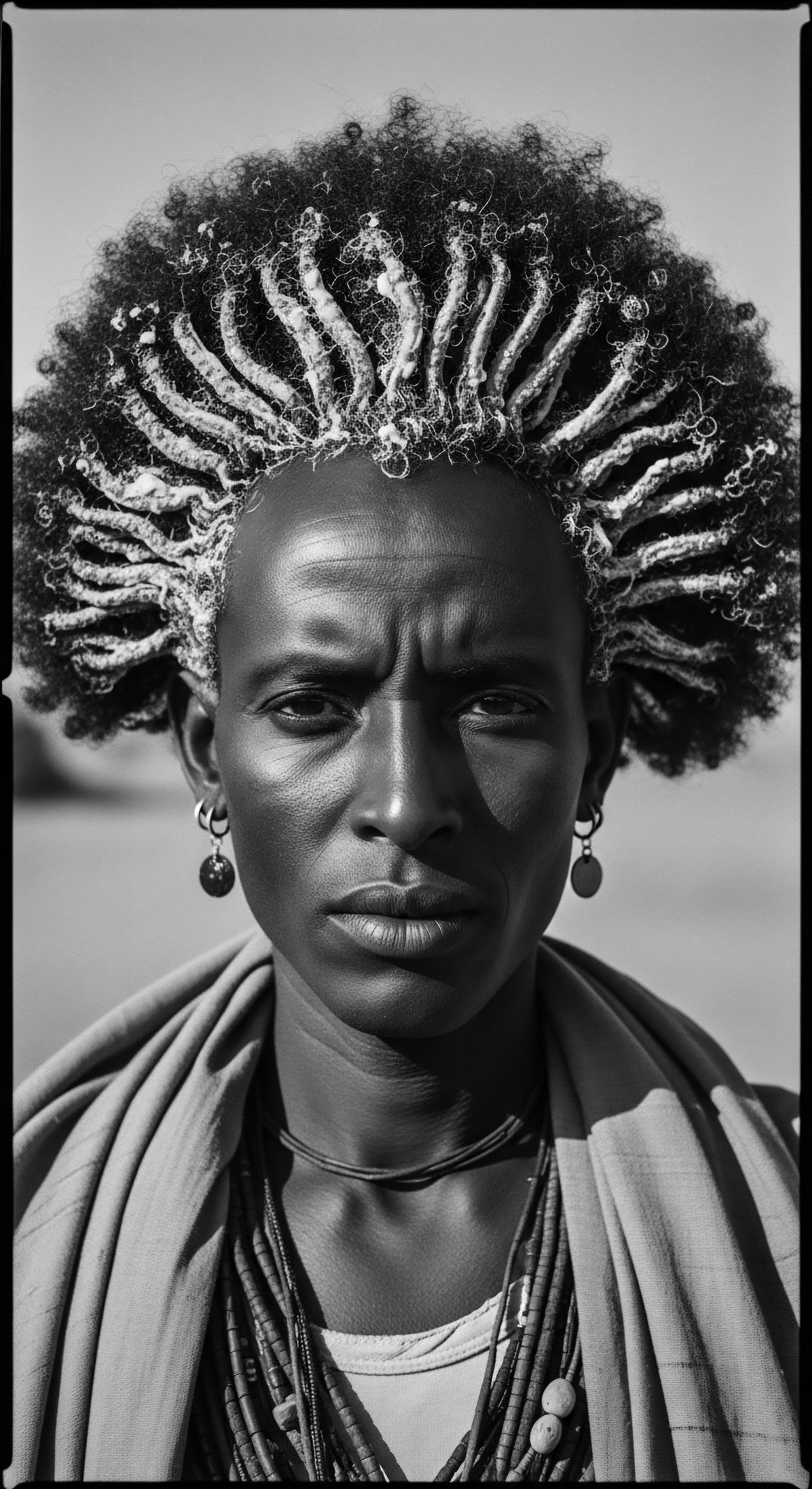
Reflection on the Heritage of Self-Perception Hair
The journey through the concept of Self-Perception Hair, particularly through the lens of textured hair heritage, is a profound meditation on identity, resilience, and the enduring wisdom passed down through generations. It is a living testament to the truth that hair, in its myriad textures and forms, is far more than mere keratin strands; it is a sacred extension of self, a vibrant chronicle of ancestral journeys, and a powerful canvas for personal and collective expression. The ‘Soul of a Strand’ ethos reminds us that every coil, every wave, every kink holds stories—stories of survival, stories of beauty, and stories of an unbroken lineage of care and self-discovery.
The ongoing dialogue surrounding Self-Perception Hair within Black and mixed-race communities continues to shape futures, advocating for a world where every texture is not only accepted but celebrated as a unique manifestation of beauty. This ongoing evolution reflects a deep reverence for the past, a vibrant engagement with the present, and an optimistic vision for a future where the self-perception of hair is always one of inherent worth and boundless splendor. It is a continuous unfolding of understanding, where the echoes of ancient practices resonate with contemporary insights, affirming the timeless connection between who we are and how we wear our crowns.
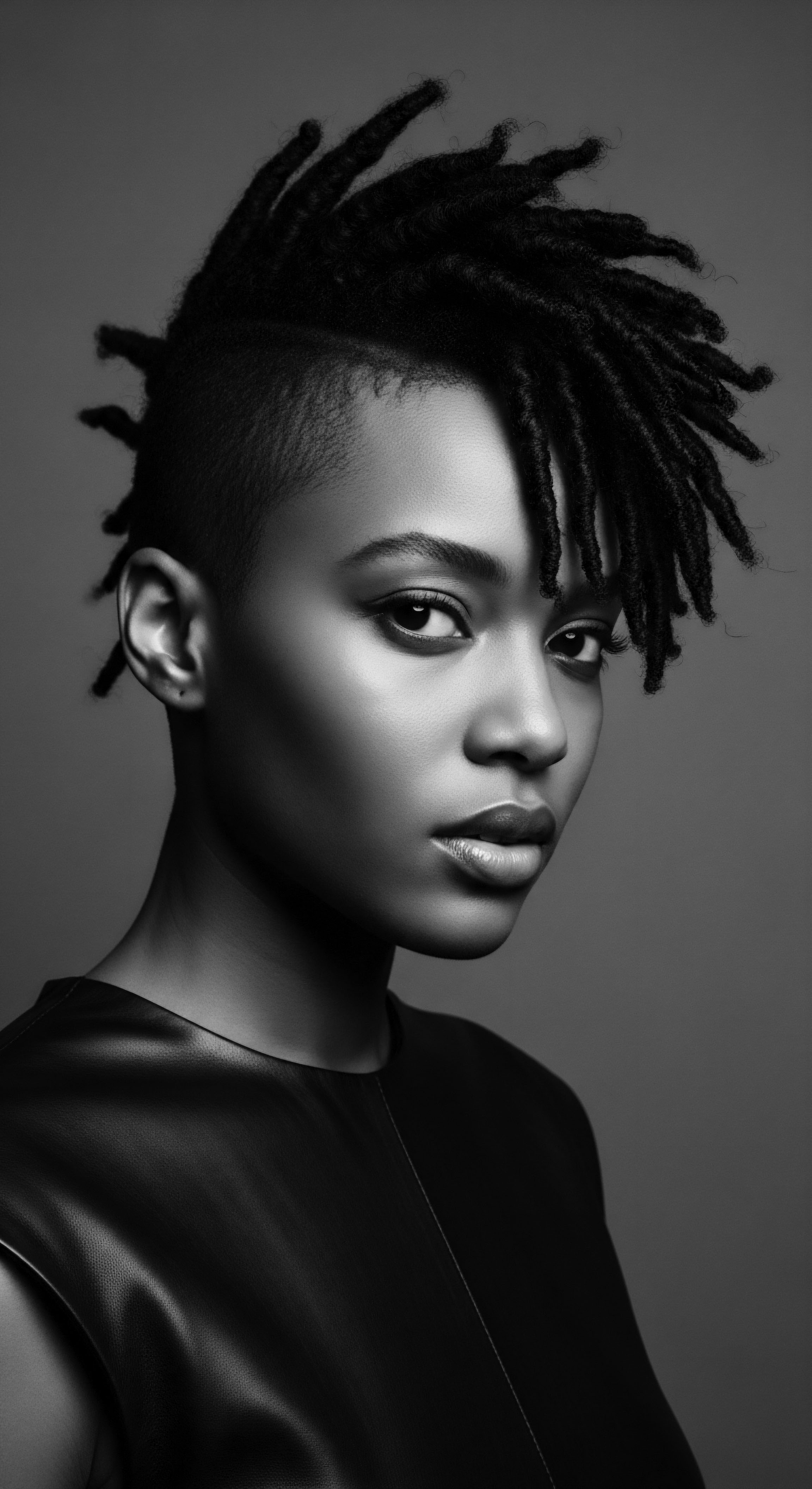
References
- Byrd, A. D. & Tharps, L. (2014). Hair Story ❉ Untangling the Roots of Black Hair in America. St. Martin’s Griffin.
- Craig, M. L. (2002). Ain’t I a Beauty Queen? ❉ Black Women, Beauty, and the Politics of Race. Oxford University Press.
- Hobbs, T. B. (2012). Democracy Abroad, Lynching at Home ❉ Racial Violence in Florida. University Press of Florida. (This work provides context for the broader historical landscape of racial control, including indirect impacts on identity and appearance).
- Mercer, K. (1994). Welcome to the Jungle ❉ New Positions in Cultural and Identity Politics. Routledge.
- Patton, M. S. (2006). African American Hair ❉ An Exploration of Identity and Culture. University of Missouri Press.
- Rooks, N. M. (1996). Hair Raising ❉ Beauty, Culture, and African American Women. Rutgers University Press.
- Tharps, L. L. (2014). Hair Story ❉ Untangling the Roots of Black Hair in America. St. Martin’s Griffin. (Second entry for emphasis, as this book is highly relevant).
